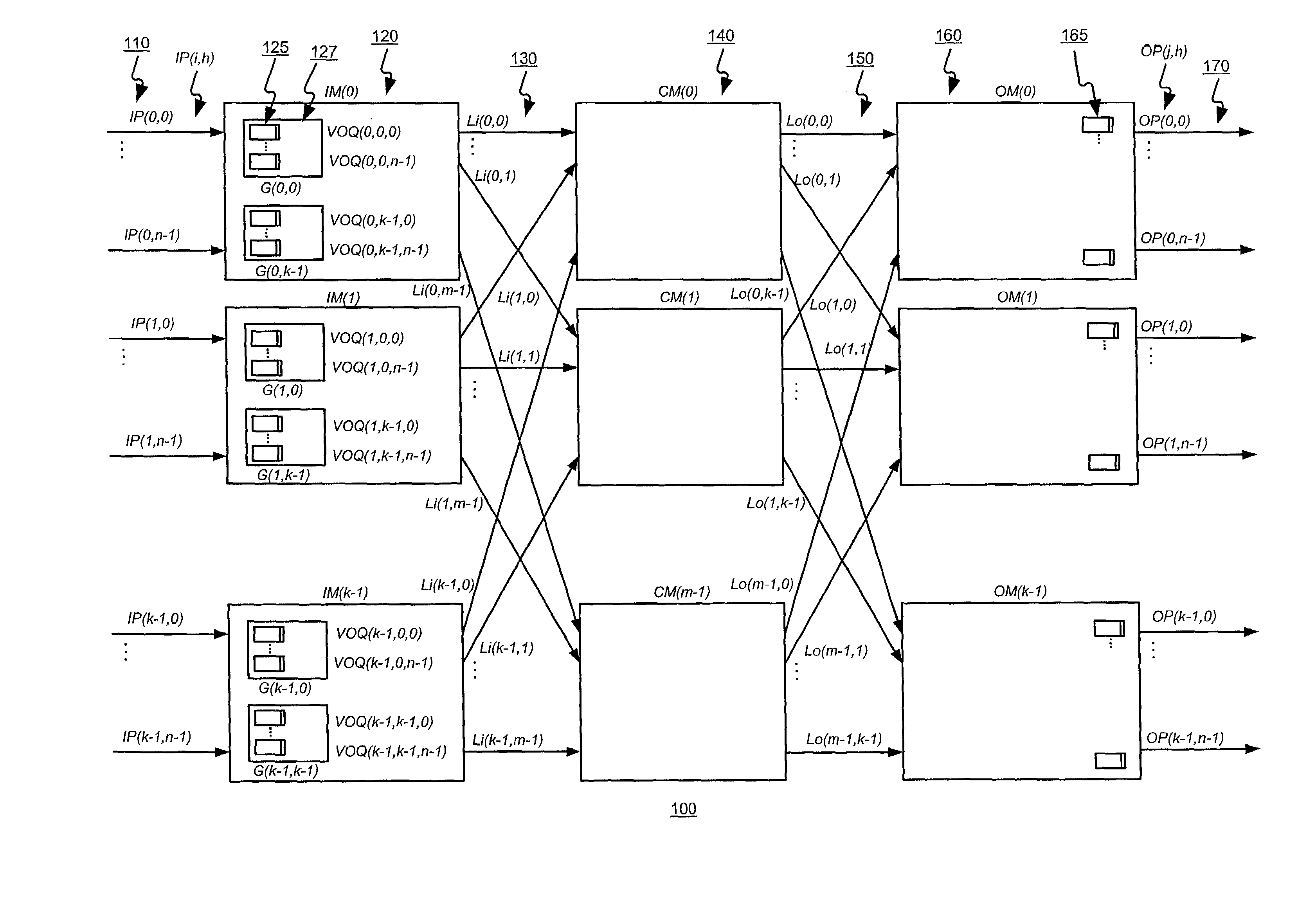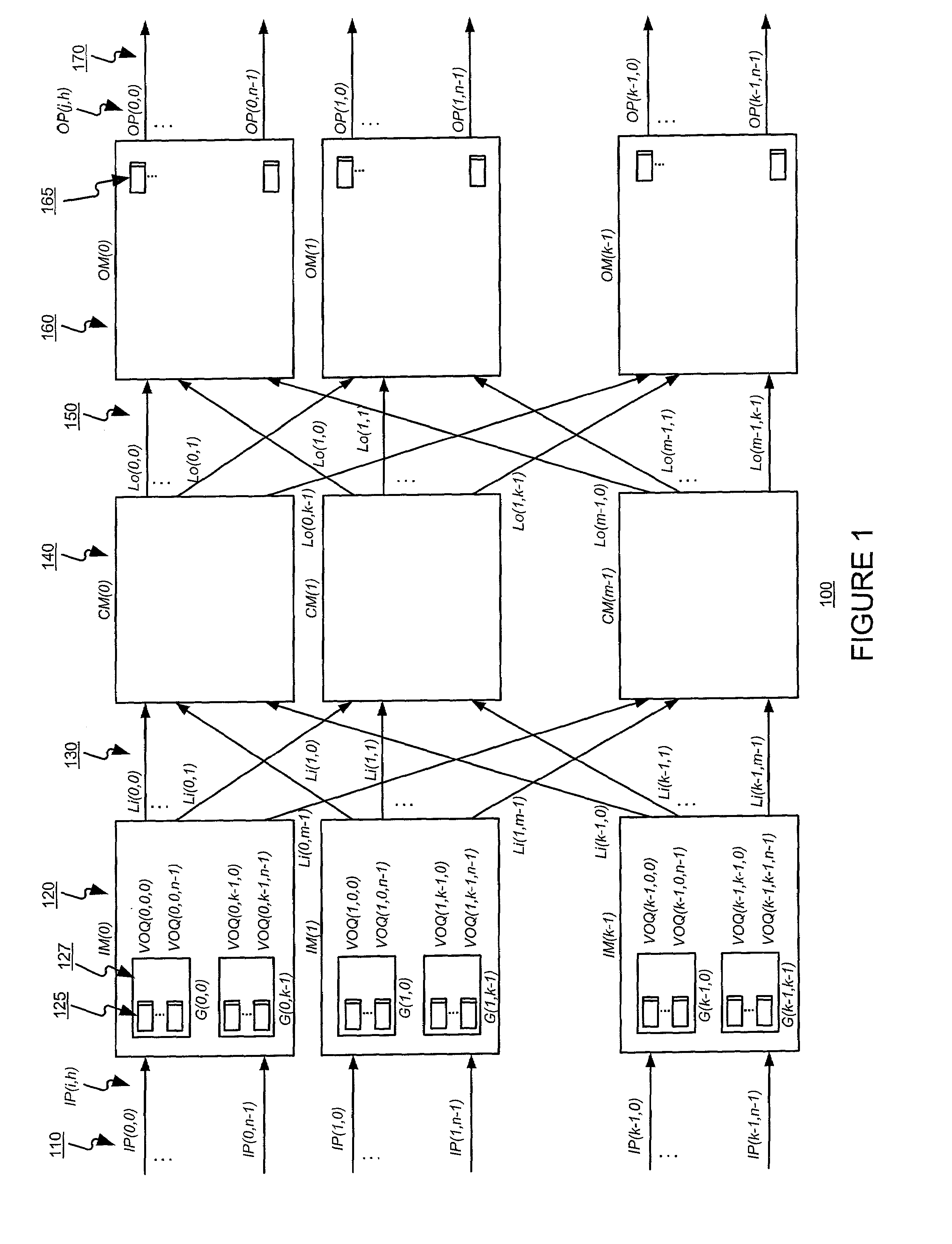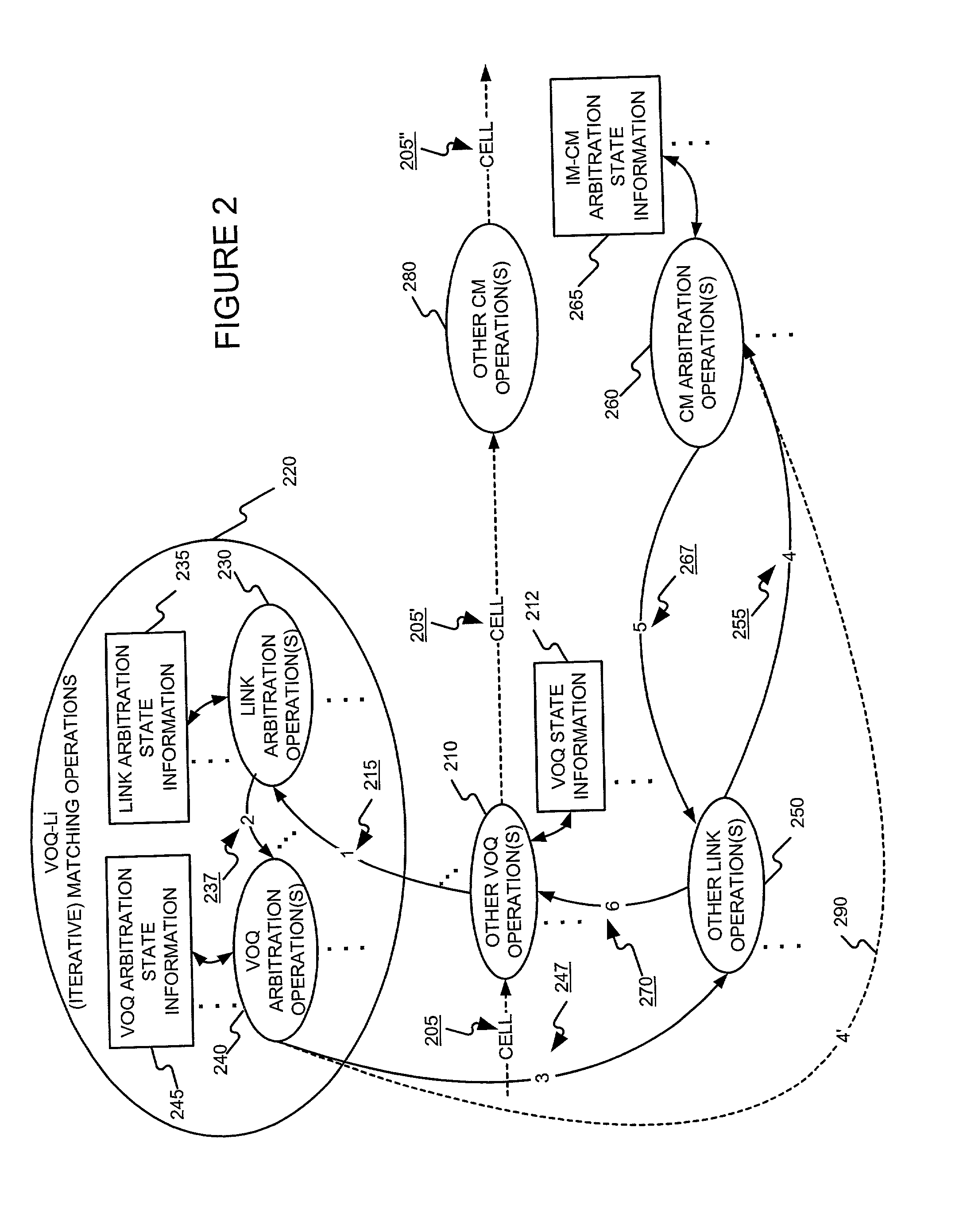Scheduling the dispatch of cells in multistage switches using a hierarchical arbitration scheme for matching non-empty virtual output queues of a module with outgoing links of the module
a multi-stage switch and dispatching technology, applied in data switching networks, store-and-forward switching systems, digital transmission, etc., can solve the problems of limiting the feasibility of using such techniques in a large scale, the complexity of the switching element is proportional to the square of the switch port, and the growth of internet traffic. , to achieve the effect of avoiding speeding up the switch fabric, minimizing the dispatch scheduling time, and high throughpu
- Summary
- Abstract
- Description
- Claims
- Application Information
AI Technical Summary
Benefits of technology
Problems solved by technology
Method used
Image
Examples
first embodiment
§ 4.2 First Embodiment
§ 4.2.1 Functions that May be Performed
[0069]A first aspect of the present invention may function to provide a scalable multiple-stage switch, able to operate at high throughput, without needing to resort to speeding up the switching fabric and without needing to use buffers in the second stage. Accordingly, the present invention may avoid the cost of speed-up and the cell out-of-sequence problems that may occur when buffers are used in the second stage. The present invention may do so using a multiple phase cell dispatch scheme, each phase using a simple and fair (e.g., round robin) arbitration methods. More specifically, the present invention may function to provide a multiple phase cell dispatch scheme in which VOQs of an input module and outgoing links of the input module are matched in a first phase, and in which an outgoing link of an input module is matched with an outgoing link of a central module in a second phase. The arbiters become desynchronized un...
embodiment
§ 4.3 Improved Embodiment
[0129]The embodiment described in § 4.2 above has been improved to reduce dispatch scheduling time needed and to reduce the number of crosspoints of interconnection wires used. Thus, the improved embodiment described here may be used in larger-scale switches.
§ 4.3.1 Functions of Improved Embodiment
[0130]The present invention may function to improve the scalability of the cell dispatch scheduling invention described in § 4.2 above. The present invention may also function to decrease the interconnections of arbiters used in input modules (IMs) of a multi-stage switch, such as a Clos-switch for example. The present invention may do so modifying a VOQ-outgoing-link (Li) matching portion of the cell dispatch scheduling invention described in § 4.2 above by replacing each of the outgoing-link arbiters with a hierarchical arbiter that includes a master arbiter and slave arbiters. Within a group (G) 127 of VOQs 125, slave arbiters each select a VOQ from among one or...
PUM
 Login to View More
Login to View More Abstract
Description
Claims
Application Information
 Login to View More
Login to View More - R&D
- Intellectual Property
- Life Sciences
- Materials
- Tech Scout
- Unparalleled Data Quality
- Higher Quality Content
- 60% Fewer Hallucinations
Browse by: Latest US Patents, China's latest patents, Technical Efficacy Thesaurus, Application Domain, Technology Topic, Popular Technical Reports.
© 2025 PatSnap. All rights reserved.Legal|Privacy policy|Modern Slavery Act Transparency Statement|Sitemap|About US| Contact US: help@patsnap.com



